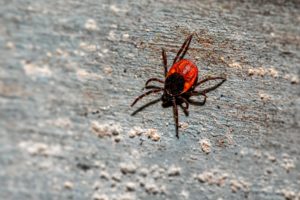
SHARE THIS ARTICLE:
Chronic Lyme Disease Is Getting Its Moment

Time.com (Jamie Ducharme) 05.16.24, published the article “Long Dismissed, Chronic Lyme Disease Is Finally Getting Its Moment.” Ducharme highlights that while acute Lyme disease cases have established diagnostic and treatment guidelines, the same clarity does not extend to cases where symptoms persist long after the initial antibiotic treatment. The medical community far less accepts these cases, known as chronic Lyme disease or Post-Treatment Lyme Disease Syndrome (PTLDS). Many medical professionals dismiss chronic Lyme, but the debilitating symptoms, including severe fatigue, musculoskeletal pain, neurological issues, cognitive difficulties, mood changes, and digestive problems, are very real for those suffering.
Chronic Lyme: A Disease Dismissed for Decades
Over the years, the majority of the medical community has refused to accept chronic Lyme disease due to several factors:
- Diagnosing is difficult because there’s no definitive test.
- Symptoms, such as fatigue and pain, overlap with many other conditions, leading to potential misdiagnosis.
- Ongoing debate about whether the symptoms are caused by a lingering infection or an autoimmune response further contributes to the need for more clarity.
Overall, researchers do not yet fully understand the transition from acute to chronic Lyme. Unfortunately, the medical system’s discomfort with uncertainty and preference for conditions that can be easily diagnosed and treated undermine chronic Lyme. As Kim Lewis, a biology professor at Northeastern University, points out, it is psychologically simpler to deny the existence of chronic Lyme than to acknowledge a condition for which there is no clear solution.
Long COVID Brings Chronic Illness into the Limelight
Long COVID is a range of persistent symptoms following the acute phase of a COVID-19 infection, including persistent cough and respiratory issues, a continued loss of taste and smell, and cardiovascular symptoms such as heart palpitations. Additionally, it includes many symptoms seen in other chronic illnesses, such as neurological symptoms, digestive issues, and extreme fatigue. Researchers estimate that roughly 7% of U.S. adults suffer from Long Covid. This massive number of affected individuals has shone a light on chronic illness, making it impossible for the medical community, researchers, and the public to ignore. We are now seeing heightened attention to and validation for individuals experiencing other long-dismissed post-infectious conditions, such as chronic Lyme disease.
The emergence of Long COVID has also underscored the challenges faced by those with chronic illnesses, particularly the difficulty of diagnosing and treating conditions that lack precise biomarkers or established treatment protocols. The persistence of symptoms such as fatigue, pain, and brain fog in Long COVID patients has illuminated the struggles of those with similar post-infectious syndromes. This increased visibility has spurred a surge in research funding and interest, fostering a far greater understanding of chronic illness. In turn, this has granted much-needed newfound compassion and support to patients with long-dismissed conditions such as chronic Lyme.
Newfound Support Furthers Chronic Lyme Efforts
In 2021, Columbia University established a treatment clinic specifically focused on Lyme disease, and Yale followed suit by dedicating its new research center to post-infectious illnesses, including chronic Lyme disease. Additionally, The National Institutes of Health (NIH) has provided Post-Treatment Lyme Disease Syndrome (PTLDS) grants to support research into the causes, diagnosis, and treatment of chronic Lyme disease.
At Northeastern, Kim Lewis is researching an old antibiotic that is ineffective against most pathogens but shows exceptional potency against Borrelia in animal trials. Partnering with a drug development company, they have begun preliminary human trials with patients with acute Lyme disease. If successful, the drug may later be tested on chronic Lyme patients. Other labs, including Stanford University, are also reevaluating existing antibiotics for Lyme treatment.
Patient advocates raise awareness like never before and continue to push for change, notably through documentaries such as “The Quiet Epidemic” and “I’m Not Crazy, I’m Sick,” released in 2023. In April, the director of “The Quiet Epidemic,” Lindsay Keys, met with lawmakers on Capitol Hill to advocate for a public awareness campaign and increased research funding for Lyme disease. This effort garnered support from representatives from Massachusetts, Pennsylvania, Maryland, New Jersey, and Connecticut. Without a doubt, these combined efforts are crucial in recognizing and understanding chronic Lyme disease and other chronic illnesses on a global level.
For More Information:





